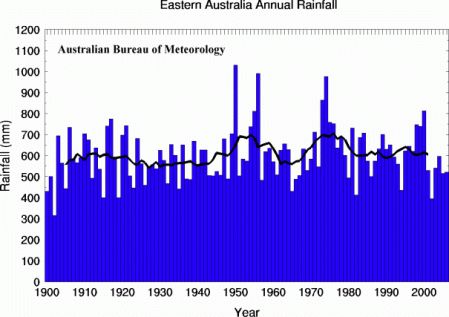For those unconvinced about my previous claim that, according to the BOM data, there doesn’t appear to be a drying trend on the east coast and think it might be an artifice of too broad averaging, I note that they should have a look at the trend maps found here. For example the rainfall trends from from 1900 to 2006.

This shows few regions which have shown a definite drying trend over the period. One clear exception being the south west of WA, which does show a drying trend over pretty much anytime period you pick. In addition it appears that some slight trend could be evident in mid to northern Queensland.
Go and have a look at some of the different time periods on their site, the lack of a clear trend for much of eastern Australia isn’t just for the period 1900-2006. In case any one’s concerned that its because we started the comparison in a drought. Take 1910-2006, 1920-2006 or 1930-2006 and you get something similar.
Indeed its not unless you compare with the 1950’s to 1970’s that you get a really marked decrease in rainfall in most of Eastern Australia.



 Posted by Steve
Posted by Steve 
